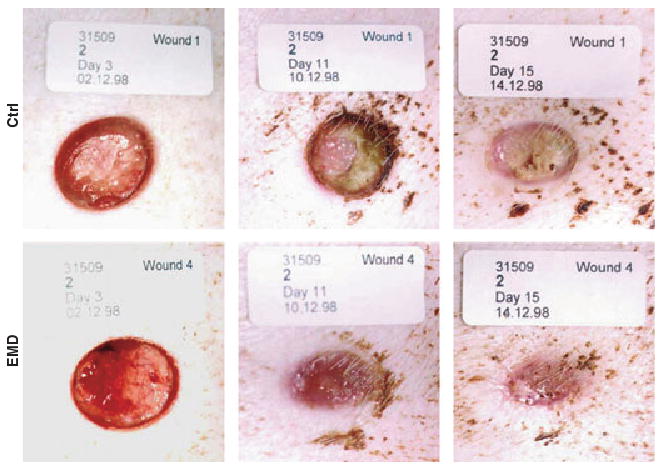Fig. 5.

Primary wound healing in full thickness wounds in pigs after treatment with enamel matrix derivative (EMD) or control (propylene glycol alginate vehicle only). After 3 days the EMD-treated wound is significantly better vascularized than the control as visualized here by the vivid red color and presence of blood vessels in the wound surface. After 11 days the EMD-treated wound is almost completely closed and epithelium is covering most of the wound. At this stage the control wound is still covered in granulation tissue and epithelialization has not yet started. After 15 days the EMD-treated wound is completely covered by epithelium, and most of the wound cavity is filled in, while the control wound still show remnants of granulation tissue exposed in the middle of the wound. In this study EMD-treated wounds healed twice as fast as control wounds (the vehicle control used here, polyglycol alginate, is often used in wound care because of its excellent biocompatibility and low pH that restrict bacterial growth and aid healing).
